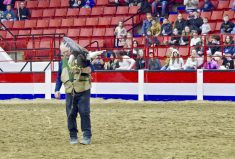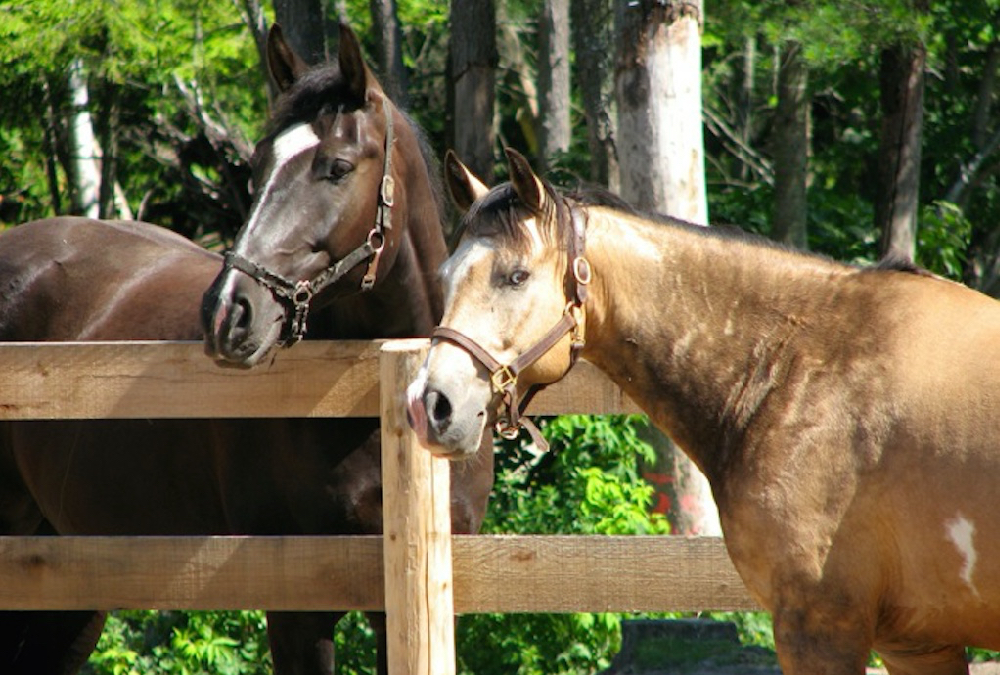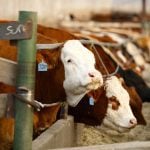Draft horse fans can look forward to an extra treat as the North American Belgian Championships returns July 17-21
If you didn’t get enough of the heavy horses at the recent Royal Manitoba Winter Fair, take heart, because more is on the way this summer.
For the first time since 1996, the North American Belgian Championships is coming on July 17 to 21, said Brenda Hunter, secretary of the Manitoba Percheron & Belgian Club committee that is hosting the show at Brandon’s Keystone Centre.
Local talent will figure prominently, she added.
“Western Manitoba has a high concentration of draft horse breeders, partly due to the equine ranching industry,” said Hunter.
Read Also

Farmers left waiting on rural crime
RCMP say they’re working to curb rural crime on the Prairies, but response time realities and continued reports of incidents remain a frustration for farmers and other residents.
The international show will see some 500 head of the finest Belgian horses on both sides of the border compete for over $150,000 in prizes in “halter and hitch” competitions, as well as the RCMP musical ride and a horse pulling contest.
“It’s the Belgian Olympics,” said Robert Berry, a regular heavy horse competitor at the winter fair who operates Bar RB Belgians near Birtle.
From 30 to 40 six-horse hitches are expected to come from places as far away as Pennsylvania, New Mexico, Ohio and across Canada. A wide range of performance events ranging from men’s, ladies’ and youth cart to team and unicorn hitches, as well as stallion, mare and gelding show classes, will be featured.
In recent years, the draft horse industry has evolved from heavily muscled, strong-boned horses bred mainly for docility and work endurance to achieve a modern performance ideal.
“We’re looking for something with style: higher headed, more animation, more action,” said Berry.
Rob Gardiner, of Gardiner’s Belgians near Virden, said that the show offers a great opportunity for horse breeders to develop a reputation in the industry.
“It’s a big deal,” he said. “It’s about representing the farm and the breeding operation.”
Top hitch horses with ribbons to their credit can fetch anywhere from $5,000 to $50,000 each, and the foals of mares proven in the ring become more valuable, he added.
Gardiner chose Belgians for his horse operation due to their “heart, guts and power.”
In the past, Percheron horses were famed for their fiery traits in harness, while Belgians were reputed to be the “gentle giants.” But in recent years, the characteristics of the breeds have become more alike as breeders set their sights on developing top athletes for show and hitch ring competition.
“I wouldn’t say one breed is jammier than the other,” he said. “They’ve all got to have some gas in the tank.”
According to the North American Belgian Championships website, the breed can be traced back to the 1850s, when Remi Vander Schueren saw a need for more muscle to pull the heavier farm machinery that started appearing with the advent of the Industrial Revolution.
He started breeding the four main draft types that existed in the Belgian countryside, and the result gained fame as the “Belgian” horse.
The government of Belgium saw potential in the breed, and the first official stud book was established in 1886, followed by the National Show in Brussels that helped make the breed internationally renowned.
A system of district shows throughout the country helped determine which horses were the best of the best, and the grand champion winners chosen in Brussels became leading sires.
The result was a rapid improvement in the breed that is regarded as a national treasure, and one of the country’s greatest exports.
The first Belgian horses were brought to Canada in 1902. The event is held every four years, with the last two shows hosted by London, Ont., and Indianapolis, Indiana.
Competing teams in the horse pull will be divided into three classes based on weight, from lightweight at 2,200-3,000 pounds, middleweight 3,001-3,500 lbs., and heavyweights at over 3,500 lbs.














